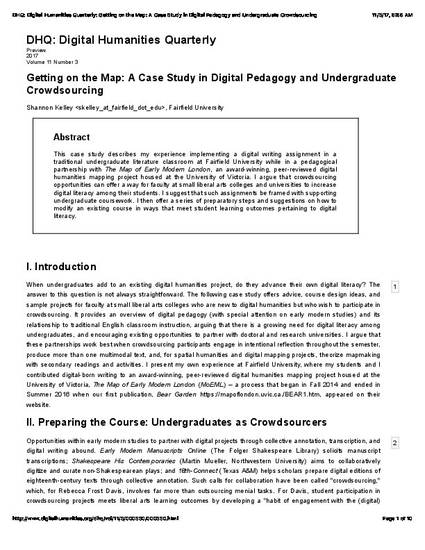
This case study describes my experience implementing a digital writing assignment in a traditional undergraduate literature classroom at Fairfield University while in a pedagogical partnership with The Map of Early Modern London, an award-winning, peer-reviewed digital humanities mapping project housed at the University of Victoria. I argue that crowdsourcing opportunities can offer a way for faculty at small liberal arts colleges and universities to increase digital literacy among their students. I suggest that such assignments be framed with supporting undergraduate coursework. I then offer a series of preparatory steps and suggestions on how to modify an existing course in ways that meet student learning outcomes pertaining to digital literacy.
Available at: http://works.bepress.com/shannon_kelley/5/

Copyright 2017 Shannon Kelley, archived here with a Creative Commons Attribution Non-commercial No Derivatives License 3.0.
Published by Alliance of Digital Humanities Organizations.